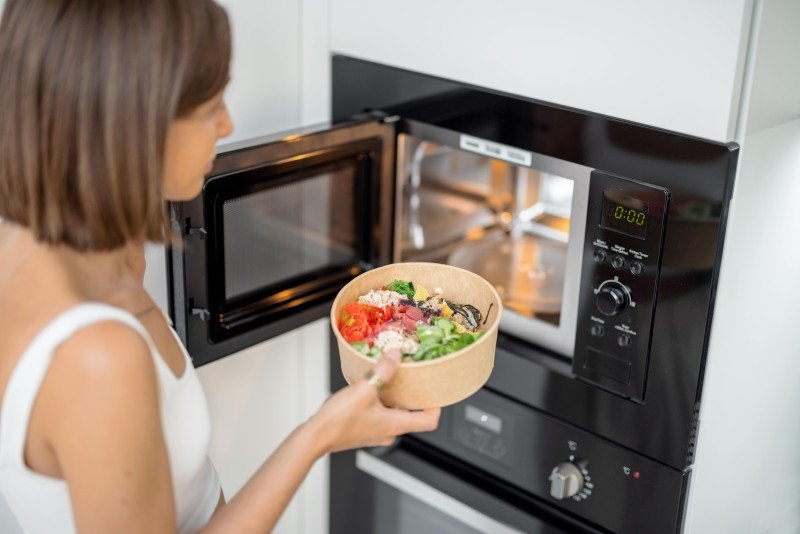Understanding Electric Ovens and Hobs: Your Guide to Cooking Efficiency
Electric ovens and hobs have changed the culinary landscape, using home cooks and professional chefs a trusted, efficient, and constant method to prepare meals. As technological improvements continue to influence device style, the performance and functionality of electric cooking systems have actually significantly enhanced. This post dives into the functions, advantages, and considerations surrounding electric ovens and hobs, providing a thorough introduction for anybody looking to upgrade or purchase kitchen appliances.
What Are Electric Ovens and Hobs?
Electric ovens are kitchen home appliances developed for baking, broiling, roasting, and other cooking methods that require regulated heat. Cheapest Fan Oven utilize electric coils or radiant heat aspects to create and keep the desired temperature level. Electric hobs, frequently referred to as electric cooktops, are flat surfaces with heating aspects that permit pots and pans to be positioned directly on them for cooking.
Table 1: Key Differences Between Electric Ovens and Hobs
| Feature | Electric Oven | Electric Hob |
|---|---|---|
| Primary Function | Baking, roasting, broiling | Heating pots and pans for cooking |
| Heating Method | Electric coils or radiant elements | Induction, glowing, or ceramic elements |
| Operation Temperature Range | As much as 500 ° F (260 ° C | ) Varies by style; normally lower than ovens |
| Cooking Styles | Versatile; ideal for different meals | Primarily stovetop cooking techniques |
| Space Requirement | Usually built into kitchen cabinetry | Often standalone or built-in choices |
| Energy Consumption | Generally higher, depending on usage | More energy-efficient with induction hobs |
Benefits of Electric Ovens and Hobs
When considering electric ovens and hobs, it's important to understand their many advantages, which can boost the cooking experience.
1. Constant Heating
Electric ovens and hobs supply even and consistent heating, which is important for lots of cooking strategies. This guarantees that dishes cook consistently, minimizing the possibilities of overcooking or undercooking certain locations of food.
2. Security Features
Modern electric ovens and hobs come equipped with various safety features to prevent mishaps in the kitchen. For circumstances, numerous models consist of automatic shut-off functions, hot surface area indications, and child security locks.
3. Easy to Use
Unlike gas designs, electric ovens and hobs are simple and easy to use. The simplicity of switching on a dial or pressing a button makes them available for cooks of all ability levels.
4. Versatile Cooking Options
With numerous cooking approaches possible, from baking to simmering, electric models are flexible adequate to accommodate a large range of cooking styles and choices.
5. Cleaning up and Maintenance
Electric ovens generally include smooth surfaces that are simple to tidy, especially designs with self-cleaning capabilities. Hobs, specifically induction types, likewise provide a flat surface area that is simple to wipe down, making maintenance a breeze.
Popular Types of Electric Ovens:
- Conventional Ovens: Ideal for traditional baking and roasting.
- Convection Ovens: Circulate hot air for faster, even cooking.
- Microwave Ovens: Use electro-magnetic radiation for fast heating and cooking.
- Toaster Ovens: Small counter top ovens for fast tasks.
Popular Types of Electric Hobs:
- Induction Hobs: Utilize electromagnetic fields for rapid heating and energy effectiveness.
- Glowing Hobs: Feature electric coils that heat up to prepare food.
- Ceramic Hobs: Offer a smooth surface area and are easy to clean.
Considerations When Choosing Electric Ovens and Hobs
While electric ovens and hobs provide many benefits, several factors should be taken into account to ensure the right fit for your kitchen:
1. Area Availability
Examine the available kitchen area before buying. Determine whether you require an integrated design or a freestanding device, and measure the dimensions thoroughly to guarantee a great fit.
2. Cooking Needs
Determine your cooking practices and preferences. If you frequently bake big quantities or cook complex meals, consider an oven with sophisticated features like convection settings or multiple racks.
3. Energy Efficiency
Look for energy-efficient models that can assist in saving on utility expenses over time. Energy Star-rated home appliances can be especially economical.
4. Spending plan
Set a practical budget that represents both the initial purchase and ongoing operating expense. In addition to the home appliance expense, consider setup and prospective repair work.
5. Additional Features
Think about whether features like clever technology, programmable settings, or steam cooking choices are important for your cooking design.
Frequently asked question Section
Q: How do I clean my electric oven?
A: Most electric ovens included self-cleaning alternatives. If your model does not have this feature, permit the oven to cool, then clean down surfaces with a mixture of baking soda and water or an industrial oven cleaner.
Q: Is induction cooking safe?
A: Yes, induction cooking is considered safe as the heating aspect just activates when suitable pots and pans is in contact with it, lowering the danger of burns.
Q: How long does it consider an electric oven to pre-heat?
A: Preheating times vary based upon the oven's design and temperature level setting however generally vary from 10 to 15 minutes.
Q: Can I utilize any pots and pans on an induction hob?
A: No, only ferromagnetic pots and pans is compatible with induction hobs. Check for induction compatibility before use to avoid damage.
Q: What is the difference between a convection oven and a standard electric oven?
A: A stove consists of a fan that circulates hot air, ensuring even cooking and decreased cooking times compared to a standard electric oven, which does not have this feature.
Electric ovens and hobs provide a contemporary solution to different cooking needs, providing performance and dependability in the kitchen. As consumers examine their choices, comprehending the functions, types, and considerations will allow them to make informed decisions. Whether one is an occasional cook or a cooking lover, electric appliances can enhance the total cooking experience, bringing benefit and imagination to the table.

